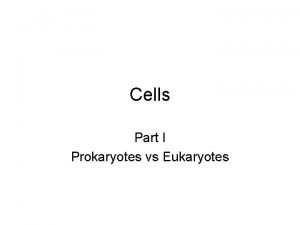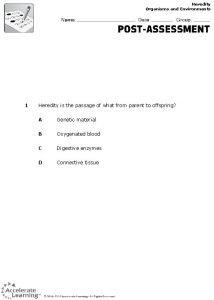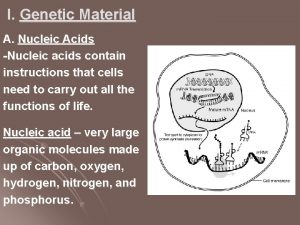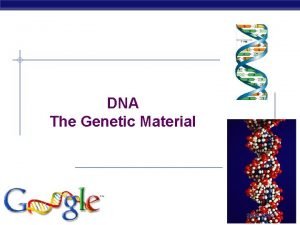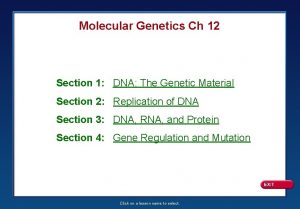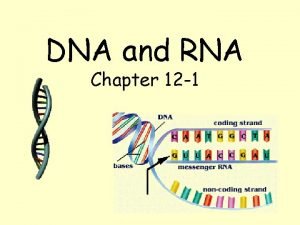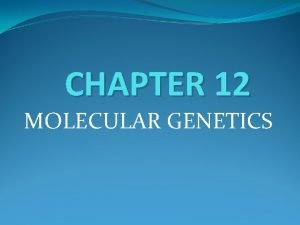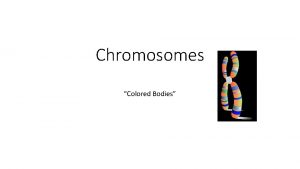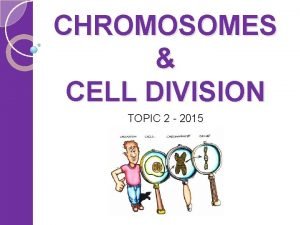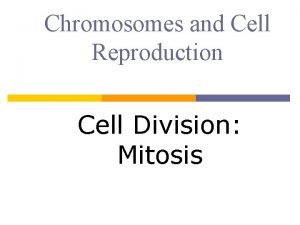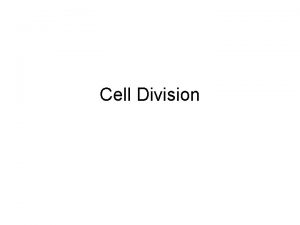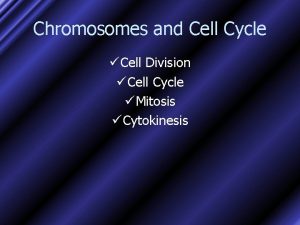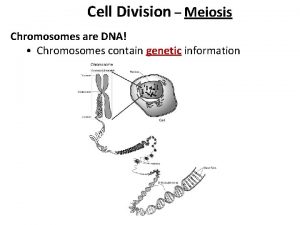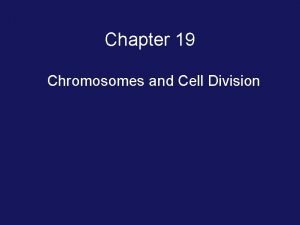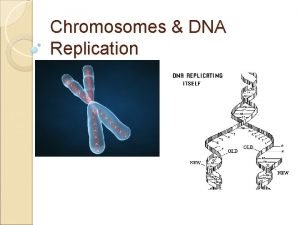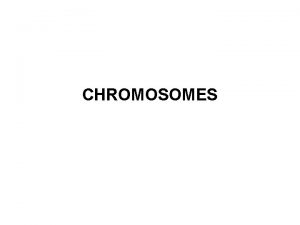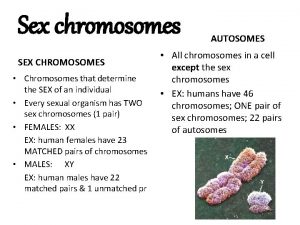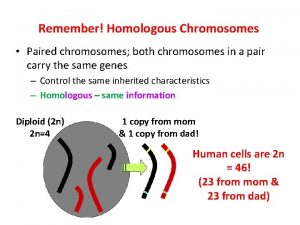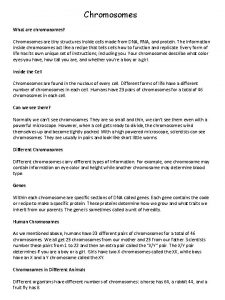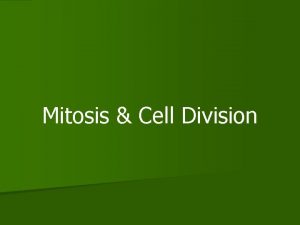4 1 Cell Division Genetic Material contd Chromosomes



















- Slides: 19

4. 1 -Cell Division & Genetic Material cont’d: Chromosomes and Karyotypes SBI 3 U

Asexual Reproduction • Reproduction requires only one parent ▫ produces genetically identical offspring. • Single-cell organisms can reproduce asexually

Sexual Reproduction • Two parents give rise to an offspring • Offspring have a unique combination of genes from both parents • Offspring is genetically distinct from siblings and parents

Sexual Reproduction Cont’d • Requires fusion of male and female gametes • GAMETE: male or female reproductive cell (i. e. egg or sperm) • When the male and female gamete join (fertilization), a ZYGOTE is formed.


Chromosomes • Human Somatic Cells ▫ 46 chromosomes (23 from each parent) • Each chromosome is paired ▫ one chromosome from the father and one from the mother. maternal paternal

Chromosomes Cont’d • 1 of the 23 pairs of chromosomes are called sex chromosomes, the remaining pairs are called autosomes • Sex chromosome: an X or Y chromosome that determines the genetic sex of an organism. • Females: XX • Males: XY

Chromosomes Cont’d sex chromosomes

Homologous Chromosomes • Pairs of chromosomes that appear similar. • Similarities: ▫ length ▫ centromere location ▫ banding patterns • Each chromosome has genes (sections of DNA) ▫ Genes contain specific genetic information for traits

Similarities: 1) Length 2) Banding patterns (genes) 3) Centromere location

Homologous Chromosomes

Homologous Chromosomes Cont’d • Homologous chromosomes have several characteristics in common. • However, they are not identical • They can carry different forms of the same gene, called alleles. • The different alleles allow the variation in the population.

GENE • Section of DNA that controls a specific trait. • Ex. eye colour, blood type, skin colour ALLELE • Specific variation of a gene. • Ex. blue eyes, green eyes, type A blood, black skin, white skin

Examining Chromosomes… • Karyotype is a photograph used to examine pairs of homologous chromosomes in a cell • Cell sample is collected and stopped during metaphase • The sample is stained and viewed under a microscope

Karyotype Chromosomes are ordered from largest to smallest, and paired with other chromosomes that have the same banding pattern Autosomes are numbered from 1 -22. Sex chromosomes are identified as X or Y B A C D F E G

Why study karyotypes? • Karyotypes help to determine chromosome abnormalities • Can indicate genetic disorders such as Down syndrome or Turner syndrome. • .

Check your Understanding… Identify the abnormalities in the following karyotypes…


Homework • Read pgs. 166 -168 • Complete pg. 168 Q# 1, 4 , 5, 9, 14, 17 • Karyotype Assignment
 Parceloo
Parceloo Chapter 3 cells and tissues figure 3-7
Chapter 3 cells and tissues figure 3-7 Which part of the cell contains genetic material
Which part of the cell contains genetic material How is genetic drift different from gene flow
How is genetic drift different from gene flow Genetic programming vs genetic algorithm
Genetic programming vs genetic algorithm Genetic programming vs genetic algorithm
Genetic programming vs genetic algorithm Genetic drift
Genetic drift Gene flow vs genetic drift
Gene flow vs genetic drift Section 10-2 cell division
Section 10-2 cell division Cell cycle and cell division
Cell cycle and cell division Mitosis
Mitosis Molecular genetics section 1 dna the genetic material
Molecular genetics section 1 dna the genetic material Heredity is best described as the -
Heredity is best described as the - Chapter 12 section 1: dna: the genetic material
Chapter 12 section 1: dna: the genetic material Chapter 12 section 1 molecular genetics answer key
Chapter 12 section 1 molecular genetics answer key Nucleic acid made up of
Nucleic acid made up of Genetic material
Genetic material Chapter 12 section 1 the genetic material
Chapter 12 section 1 the genetic material Chapter 12 dna and rna section 12-1
Chapter 12 dna and rna section 12-1 Section 12-1 dna
Section 12-1 dna


